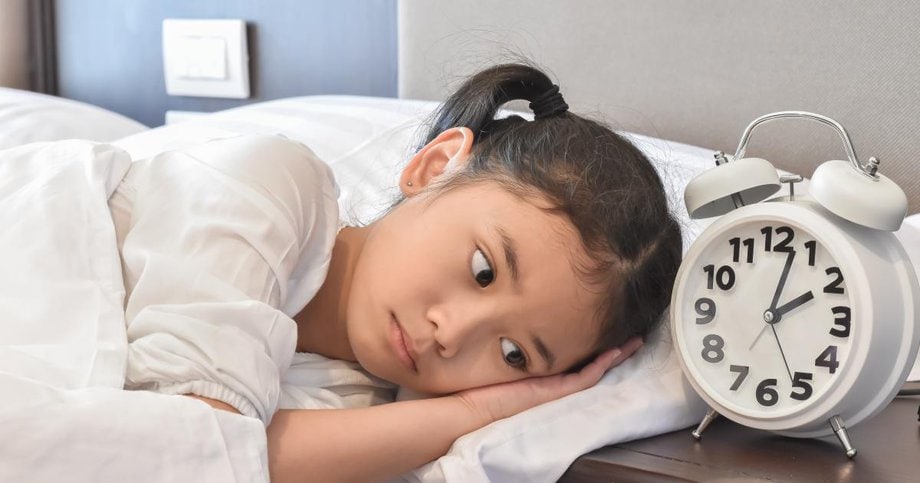How to Address Sleep Problems in Children and Adolescents

Sleep problems in children and adolescents are a significant concern as they can have detrimental effects on their overall well-being and development. This article aims to provide evidence-based strategies for addressing these sleep issues.
By understanding the common sleep problems in this population and their underlying causes, parents, caregivers, and healthcare professionals can take appropriate measures to create a healthy sleep environment and establish effective bedtime routines.
Additionally, this article will explore various strategies for improving sleep quality, ultimately promoting better sleep outcomes for children and adolescents.
Key Takeaways
- Consistent sleep schedule and bedtime routine are important for addressing sleep problems in children and adolescents.
- Creating a comfortable sleep environment, including a cool, dark, and quiet bedroom, can help improve sleep quality.
- Limiting exposure to electronic devices and stimulating activities before bedtime is crucial for better sleep.
- Understanding the relationship between medical conditions and sleep problems is essential for effective interventions.
Common Sleep Issues in Children and Adolescents
Common sleep issues in children and adolescents include difficulties falling asleep, frequent waking during the night, and insufficient total sleep duration. These issues can lead to various negative consequences, such as daytime sleepiness, impaired attention and concentration, irritability, and poor academic performance.
To prevent sleep disorders and promote healthy sleep habits, it is important to establish good sleep hygiene. Sleep hygiene tips for children and adolescents include maintaining a consistent sleep schedule, creating a relaxing bedtime routine, ensuring a comfortable sleep environment, limiting exposure to electronic devices before bedtime, avoiding caffeine and stimulating activities close to bedtime, and promoting regular physical activity during the day.
Understanding the Causes of Sleep Problems
A comprehensive understanding of the etiology of sleep disturbances in the pediatric population is crucial for developing effective interventions. Sleep disorders in children and adolescents can be caused by various factors, including medical conditions.
Medical conditions such as asthma, allergies, and gastrointestinal disorders have been associated with sleep problems in this population. For example, asthma symptoms, such as coughing and wheezing, can disrupt sleep and lead to fragmented sleep patterns. Similarly, allergies can cause nasal congestion and itching, resulting in difficulty falling asleep or staying asleep. Gastrointestinal disorders, such as gastroesophageal reflux disease (GERD), can also contribute to sleep disturbances due to symptoms like heartburn and abdominal pain.
Understanding the relationship between these medical conditions and sleep disorders is essential for healthcare professionals to provide targeted interventions and improve the sleep quality of children and adolescents.
Creating a Healthy Sleep Environment
To optimize sleep quality, it is important to establish a conducive sleep environment that promotes relaxation and minimizes potential disruptions. Creating a sleep-friendly bedroom is essential in achieving this goal. Here are some strategies to promote relaxation before bedtime:
- Use soft and comfortable bedding to enhance comfort.
- Ensure the bedroom is cool, dark, and quiet to create a calm atmosphere.
- Remove electronic devices from the bedroom to reduce distractions and exposure to blue light.
- Establish a consistent bedtime routine that includes activities such as reading, taking a warm bath, or practicing relaxation techniques.
Establishing a Bedtime Routine for Better Sleep
Establishing a consistent bedtime routine that incorporates activities such as reading, taking a warm bath, or practicing relaxation techniques can contribute to improved sleep quality and promote a more restful night’s sleep. Healthy sleep habits are essential for children and adolescents to ensure optimal physical and cognitive development. A bedtime routine helps signal to the body that it is time to wind down and prepares it for sleep.
Reading before bed can be particularly helpful as it promotes relaxation and reduces stimulation from electronic devices. Taking a warm bath can also have a calming effect on the body, making it easier to fall asleep. Additionally, practicing relaxation techniques, such as deep breathing or progressive muscle relaxation, can help reduce anxiety and promote a sense of calmness, facilitating a smoother transition into sleep.
Effective Strategies for Improving Sleep Quality
One effective strategy for improving sleep quality involves implementing a consistent bedtime routine that incorporates activities such as reading, taking a warm bath, or practicing relaxation techniques. These activities promote sleep hygiene by signaling to the body that it is time to wind down and prepare for sleep.
Sleep hygiene refers to a set of practices that promote healthy sleep patterns and habits. In addition to a bedtime routine, other effective strategies for improving sleep quality include:
- Maintaining a regular sleep schedule by going to bed and waking up at the same time every day.
- Creating a comfortable sleep environment that is cool, dark, and quiet.
- Limiting exposure to screens and stimulating activities before bedtime.
- Practicing relaxation techniques such as deep breathing, meditation, or progressive muscle relaxation to reduce stress and promote relaxation.
Frequently Asked Questions
Are Sleep Problems in Children and Adolescents More Common in Boys or Girls?
The prevalence of sleep problems in children and adolescents varies between boys and girls. Factors such as common causes of sleep problems and differences in sleep patterns may contribute to these variations.
Can Sleep Problems in Children and Adolescents Be a Sign of an Underlying Medical Condition?
Sleep problems in children and adolescents can be indicative of underlying medical conditions. These conditions, which can manifest as sleep disturbances, may include but are not limited to sleep apnea, restless leg syndrome, and psychiatric disorders.
How Long Does It Typically Take for a Child or Adolescent to Adjust to a New Bedtime Routine?
The adjustment period for a child or adolescent to a new bedtime routine can vary. Factors such as age, individual sleep patterns, and the strategies used for transitioning can influence the time it takes to adapt.
Is It Normal for Children and Adolescents to Experience Occasional Night Terrors or Sleepwalking?
Occasional night terrors and sleepwalking are normal phenomena experienced by children and adolescents. These sleep disorders can be distressing but tend to resolve on their own without specific intervention in most cases.
Are There Any Specific Dietary Factors That Can Affect Sleep Quality in Children and Adolescents?
Dietary factors can have an impact on sleep quality in children and adolescents. Certain foods and beverages, such as those high in caffeine or sugar, may disrupt sleep. Additionally, excessive screen time before bed can negatively affect sleep quality.









